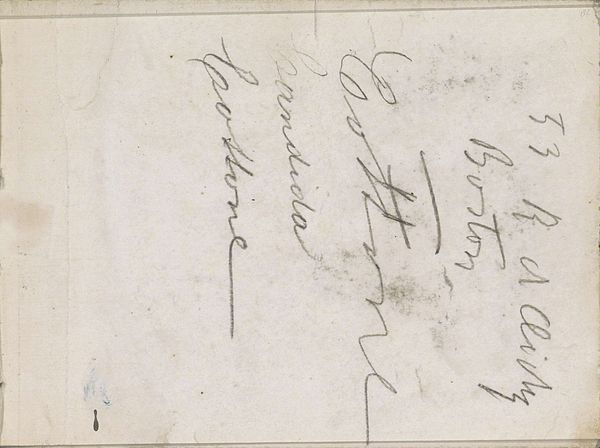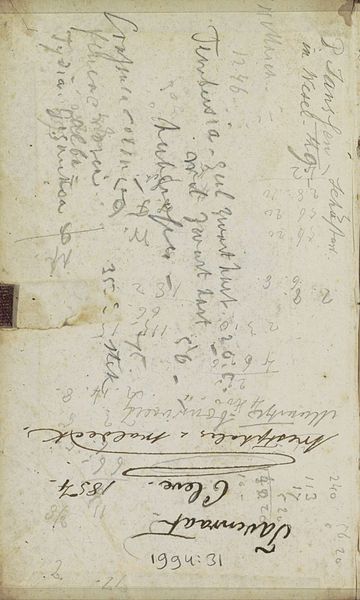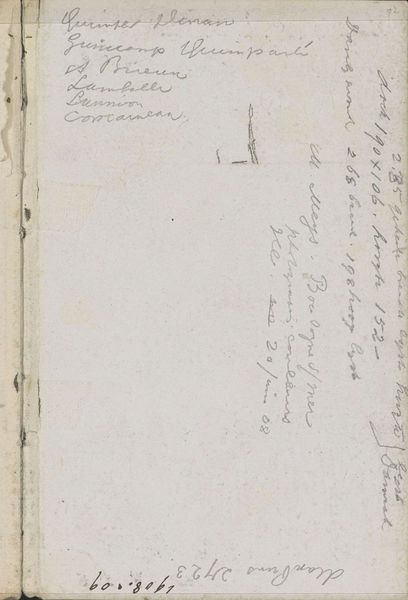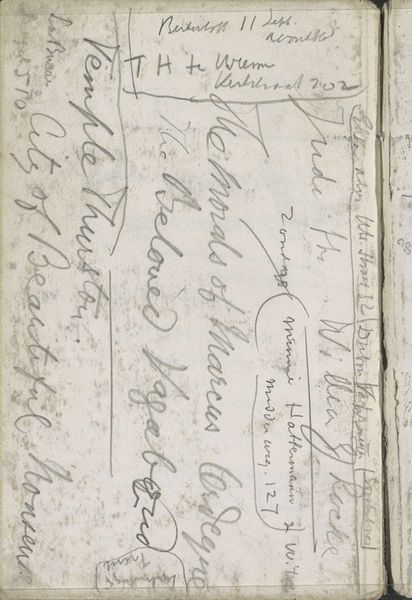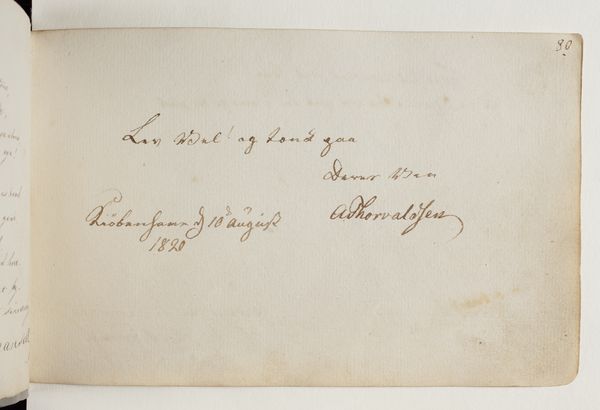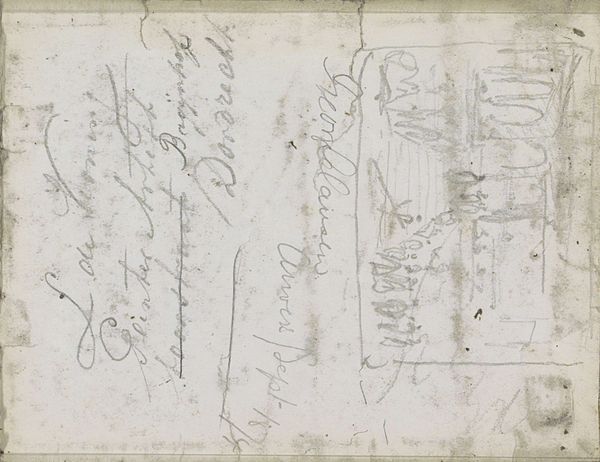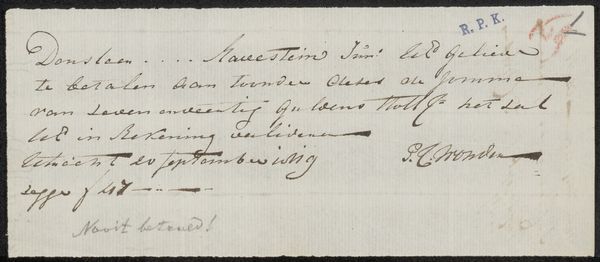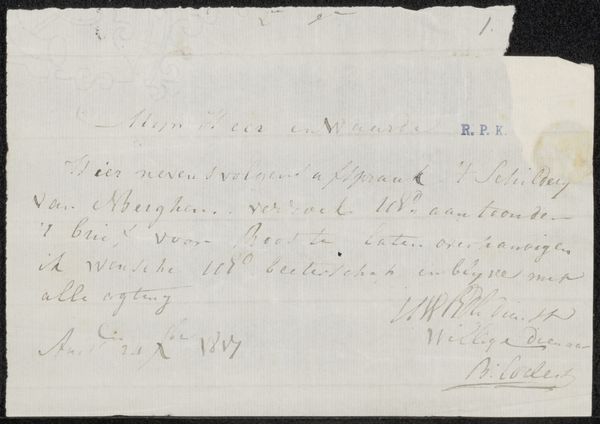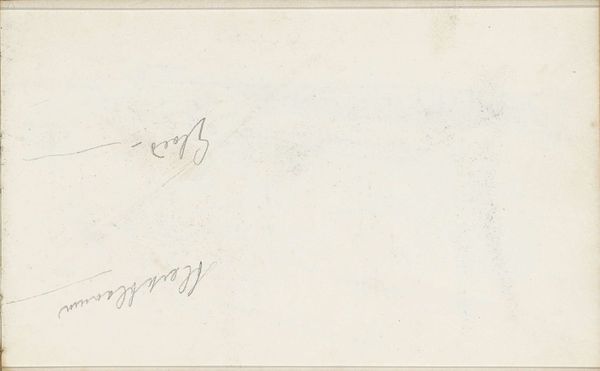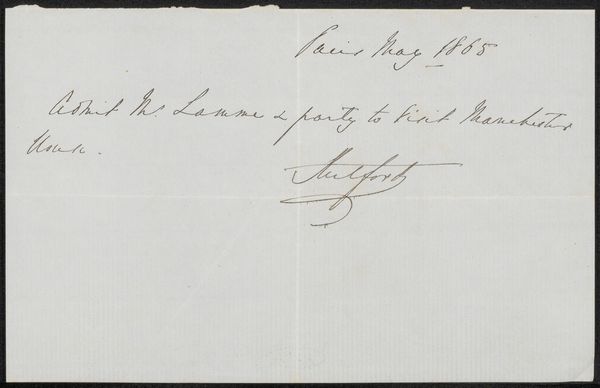
drawing, mixed-media, paper, pencil
#
portrait
#
drawing
#
aged paper
#
mixed-media
#
hand written
#
hand-lettering
#
dutch-golden-age
#
impressionism
#
hand drawn type
#
hand lettering
#
paper
#
personal sketchbook
#
hand-written
#
hand-drawn typeface
#
fading type
#
pencil
#
small lettering
Copyright: Rijks Museum: Open Domain
Curator: Let’s consider this piece by George Hendrik Breitner, titled "Annotaties," created between 1880 and 1882. It’s currently held at the Rijksmuseum, and it's rendered in mixed media on paper, combining pencil with other elements. Editor: It looks like something ripped straight from a personal sketchbook! The delicate handwriting, fading and cramped onto the page, gives a real sense of intimacy. It feels unfinished, like a peek into the artist's private thoughts. Curator: Exactly! Breitner was deeply involved in documenting urban life and capturing fleeting moments. These annotations, as the title suggests, offer insight into his process. The piece showcases Breitner’s exploration of hand-lettering, very much of interest when we consider artistic methods and societal interactions. The handwriting itself is not simply informative; it becomes a visual element, part of the artistic expression. Editor: Absolutely, it pushes back against formal constraints. I’m immediately thinking about issues of authorship, access and the very idea of a completed piece versus a work in progress. I also want to consider, how is Breitner making observations about his reality, or about some realities he perceived from an early modernist perspective? How is class playing a role here, whether actively, inactively, literally or allegorically? Curator: Breitner situated himself amongst the working class of Amsterdam; it can be seen as an early form of street photography, except with sketches and annotations instead of photographs. I find myself wondering about the nature of the materials: why did he choose this paper, these specific pencils or charcoals? Did these choices influence how it looks? Did he perhaps use locally sourced or cheaper paper which impacted the outcome and subsequent perception of its value? Editor: All valid points when interpreting not just his artwork but its reception. Considering how societal hierarchies of class and gender shaped the art world then, this sketch becomes quite a powerful statement about representation and whose stories were being deemed worthy of preservation. It pushes against prevailing expectations. Curator: Agreed. It disrupts conventional notions of artistic skill and challenges institutional narratives on high and low art, the formal and the informal. Editor: Ultimately, this invites questions about art's role in documenting and interrogating those social and historical intersections and invites us to find fresh resonance between then and now.
Comments
No comments
Be the first to comment and join the conversation on the ultimate creative platform.

